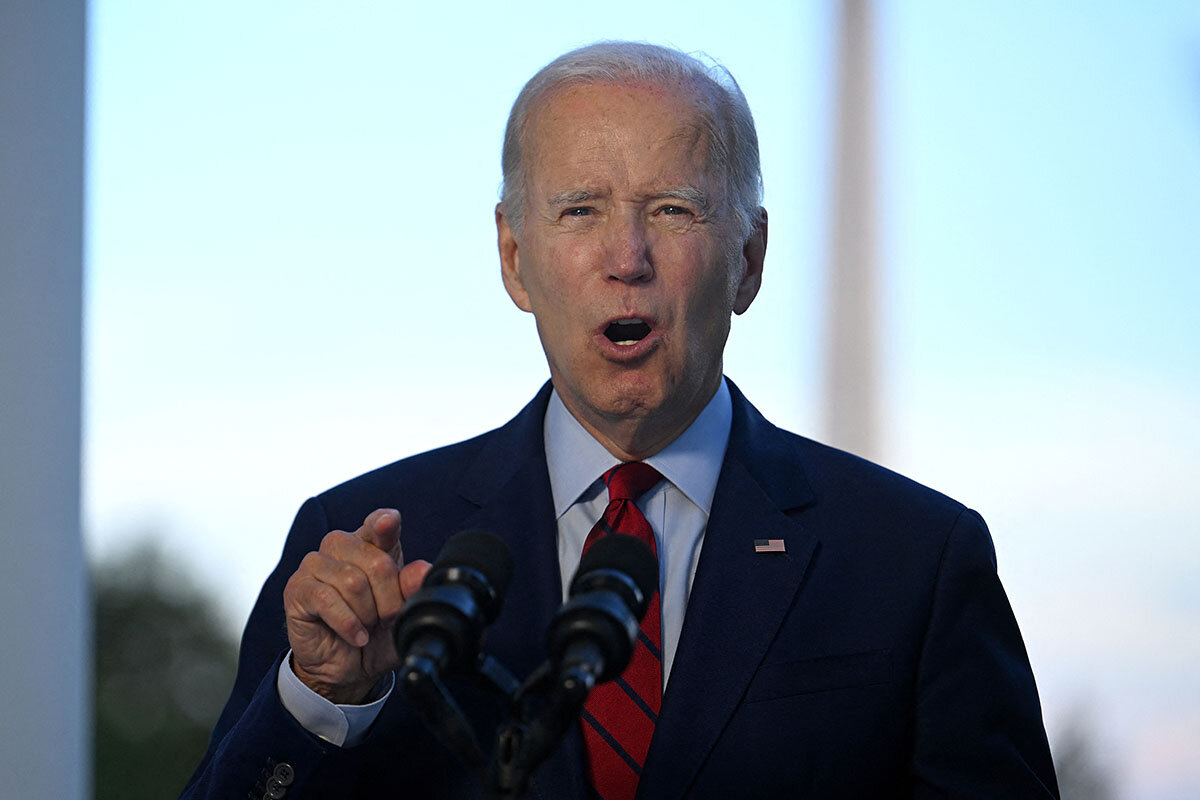Zawahri death marks end of an era – in more ways than one
Loading...
When President Barack Obama stepped in front of the cameras on May 1, 2011, some 56 million people watched him announce that an American military operation had ended the life of Al Qaeda leader Osama bin Laden.
It’s safe to assume President Joe Biden did not have that big an audience last night, when he revealed that a U.S. drone strike had killed Mr. bin Laden’s successor, Ayman al-Zawahri, in Kabul, Afghanistan. Part of that is likely due to name recognition: To most Americans, Mr. bin Laden was far better known than Mr. Zawahri. But it may also reflect broader changes in the mood of the nation and the perception of threats.
Why We Wrote This
Everyone involved in the 9/11 attacks has now been captured or killed. And for many Americans, the threat of terrorism has receded – replaced by other issues.
Terrorism was a central national security concern and a word that evoked widespread anxiety in the waning years of the last century and the early 2000s. To many, it seemed a dominant danger of life: After 9/11, fully 58% of Americans were worried they or a family member would become a victim of terrorism, according to Gallup.
Today, that fear has declined substantially. Many Americans now regard other issues as bigger problems, from climate change and immigration to crime, drug addiction, and the war in Ukraine.
When President Barack Obama stepped in front of the cameras on Sunday night, May 1, 2011, it’s not much of an exaggeration to say the nation hung on his words. Fifty-six million people watched him announce live that an American military operation had ended the life of Al Qaeda leader Osama bin Laden, the bearded symbol of international terrorism’s threat to the United States.
It’s safe to assume President Joe Biden did not have that big an audience on the evening of Aug. 1, when he revealed that a U.S. drone strike had killed Mr. bin Laden’s successor, Ayman al-Zawahri, in Kabul, Afghanistan. Part of that is likely due to name recognition: To most Americans, Mr. bin Laden was far better known than Mr. Zawahri. But it may also reflect broader changes in the mood of the nation and the perception of threats.
Terrorism was a central national security concern and a word that evoked widespread anxiety in the waning years of the last century and the early 2000s. To many, it seemed a dominant danger of life: After 9/11, fully 58% of Americans were worried they or a family member would become a victim of terrorism, according to Gallup.
Why We Wrote This
Everyone involved in the 9/11 attacks has now been captured or killed. And for many Americans, the threat of terrorism has receded – replaced by other issues.
Today, that fear has declined substantially. Many Americans now regard other issues as bigger problems, from climate change and immigration to crime, drug addiction, and the war in Ukraine.
The modern terrorist era could be seen as beginning with the leftist Red Brigades in Europe and hundreds of airliner hijackings in the 1960s and ’70s. In 1983, the terror group Hezbollah blew up a Marine barracks in Lebanon, killing 241 U.S. service members. Ten years later, Middle East terrorism arrived on American soil, when Al Qaeda-linked terrorists attacked the World Trade Center for the first time, carving out a 100-foot-deep crater in its parking garage.
Sept. 11, 2001, was a terrible turning point, the deadliest foreign attack on American soil, setting off what Pentagon officials called G.W.O.T, the Global War on Terrorism. The U.S. plunged into conflicts in Afghanistan and Iraq that morphed into much more than anti-terror actions.
The intractability of these foreign wars soured the U.S. public on this effort and lowered the salience of terrorism in general. Prior to President Biden’s pullout from Afghanistan last summer, one poll found that 71% of Americans judged the 20-year effort there a failure.
But the fiascoes of the Iraq and Afghanistan wars perhaps obscured an anti-terrorism success. The U.S. wasn’t able to remake those nations in America’s image, but persistence and technology – drones, electronic surveillance – helped U.S. forces dismantle the structure of Al Qaeda and other jihadist groups.
“I made a promise to the American people that we’d continue to conduct effective counterterrorism operations in Afghanistan and beyond,” President Biden said last night. “We make it clear again tonight that no matter how long it takes, no matter where you hide – if you are a threat to our people, the United States will find you and take you out.”
This lends some hope that the Biden administration’s so-called over the horizon strategy, which relies on air power and intelligence to prevent Afghanistan from once again turning into a center of terrorist activity, could work in the years ahead.
The effort has been far from perfect. While the Zawahri strike killed only him according to U.S. officials, a botched drone strike in Kabul killed at least 10 innocent people.
And the situation remains fluid. Mr. Zawahri’s very presence in Kabul could be a danger sign. Afghanistan’s Taliban leaders had promised they would not host active terrorist leaders. What was the head of Al Qaeda doing in the capital city?
“This is an open-ended situation to be managed, not a problem solved,” tweeted Council on Foreign Relations President Richard Haass on Monday.









